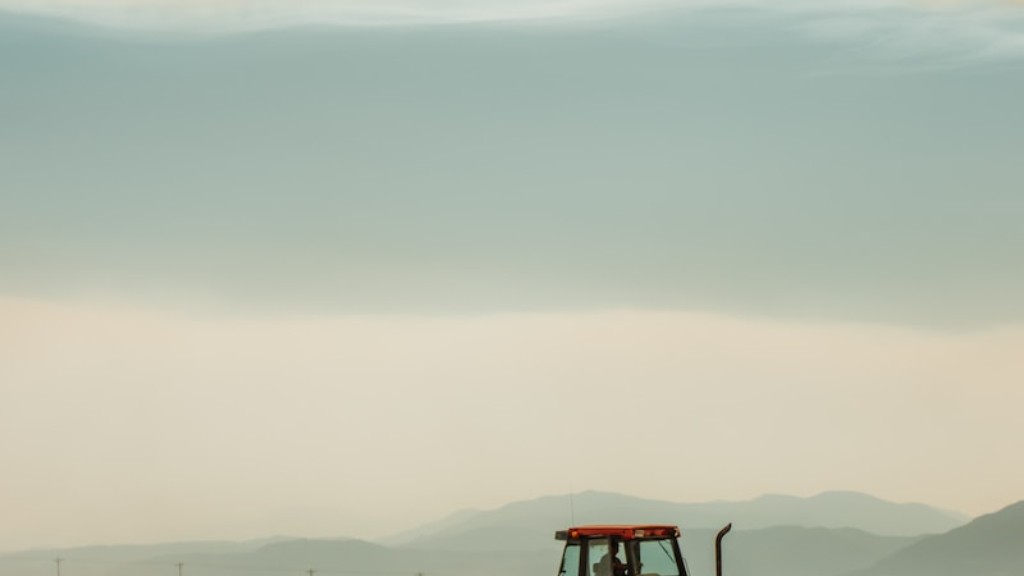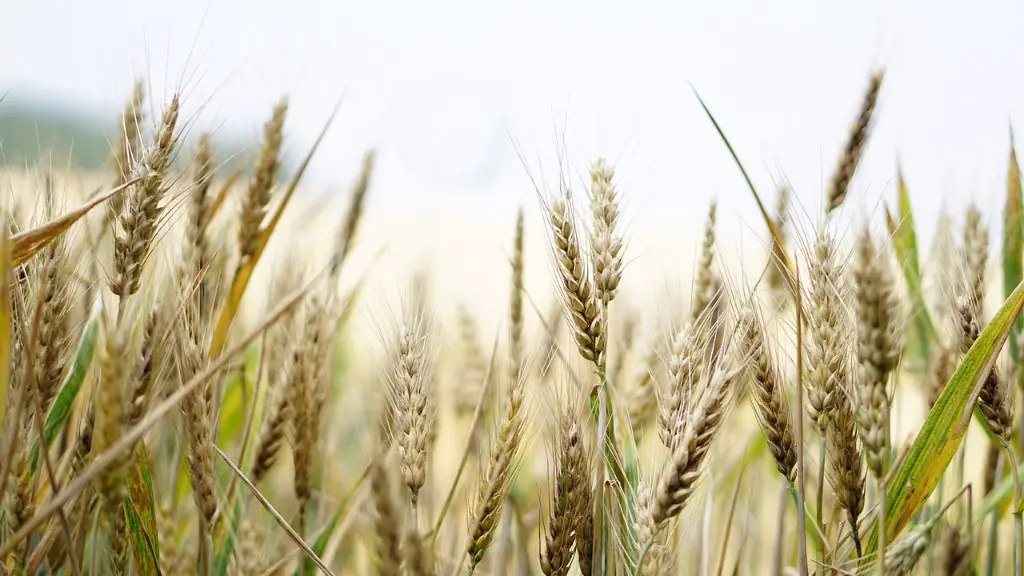There are many different types of agriculture, and each type has its own specific geography. For example, arable farming is typically found in regions with moderate climate and rainfall, while livestock farming is more common in regions with high amounts of rainfall. In addition, agriculture also varies in terms of land use; some farmers may use only a small amount of land for their crops, while others may have large tracts of land for their livestock.
The geography of agriculture is the study of how agriculture affects and is affected by the Earth’s physical features. This includes the study of how climate, soils, water, and other natural resources affect agricultural production, as well as how agriculture affects the environment.
How is geography used to study agriculture?
Climate and natural resources are the two main factors that determine what type of crops and livestock can be grown and raised in a particular area. The climate of an area affects the types of crops that can be grown, as well as the grazing areas and conditions for livestock. The natural resources of an area, such as water and soil, also play a role in determining what can be grown and raised.
Physical geography is closely connected to agricultural practices. Agricultural production regions can be associated with ecological regions or bioclimatic zones. For example, the prairies of North America are located in a temperate grassland biome, while the Sahara Desert is located in a hot, dry desert biome. Agricultural production is also influenced by climate, soils, and topography.
What is an example of agricultural geography
There are many examples of agricultural geography. One is the Sahara Desert in North Africa, which has very little arable land and cannot support large-scale crop growth. Another example is Greenland, which has a cold climate that also limits crop growth. In some areas with less arable land, people may rely primarily on livestock agriculture.
Geographic components such as climate and natural resources play a big role in determining what type of crops and livestock can be raised in a particular area. The climate will dictate how well certain crops will grow, and the natural resources will dictate what type of livestock can be raised. For example, if an area is too cold for certain crops to grow, then those crops will not be able to be raised in that area. Similarly, if an area does not have the proper resources for certain livestock, then those livestock will not be able to be raised in that area.
Who defined agricultural geography?
Agricultural geography is the study of regional variation in agriculture and the factors responsible for them. According to Bernhard (1915), agricultural facts are arranged in an orderly manner. Coppock (1969) defines agricultural geography as the description and analysis of the distribution of plants, animals, and soil resources, and of the production systems they support.
Agriculture is the mainstay of the Indian economy. Over 70% of the rural households depend on agriculture as their main source of income. The sector provides employment to around 54% of the total workforce of the country.
The contribution of agriculture to the country’s GDP has been declining over the years. In FY 2018-19, it is estimated to be around 15%. The sector is highly vulnerable to the vagaries of nature, such as floods, droughts, and cyclones.
The government has been taking various measures to promote the growth of the sector. These include initiatives like Pradhan Mantri Fasal Bima Yojana, Pradhan Mantri Krishi Sinchai Yojana, Pradhan Mantri Krishi Unnati Yojana, and Pradhan Mantri Awas Yojana (Gramin).
What are the main types of agriculture?
Subsistence farming is practiced primarily to grow crops and vegetables for the consumption of the farmer and his/her family. There is very little, if any, surplus produce that is sold in the market. Commercial farming, on the other hand, is undertaken with the main objective of generating income through the sale of farm produce in the market. The scale of commercial farming is generally much larger than subsistence farming.
The five themes of geography help us to understand the world around us. Location is where something is situated. Place is what makes up a location. A region is an area that has common characteristics. Movement is how things move from one place to another. Human-environment interaction is how humans interact with their environment.
What are the 4 types of agriculture
There are four main branches of agriculture: livestock production, crop production, agricultural economics, and agricultural engineering. Each of these branches has a different focus and contribute in different ways to the agriculture industry.
Agriculture is the cultivation of animals, plants, fungi, and other life forms for food, fiber, biofuel, drugs, and other products used to sustain and enhance human life. Agriculture was the key development in the rise of sedentary human civilization, whereby farming of domesticated species created food surpluses that enabled people to live in cities. The study of agriculture is know as agricultural science.
There are two main types of agriculture: subsistence agriculture and industrialized agriculture. Subsistence agriculture is the type of agriculture that is practised in developing countries, where farmers grow crops and rear animals to meet their own needs, rather than to sell them. This type of agriculture is often traditional and relies on manual labour and simple tools. It is usually rain-fed, which means that it is dependent on the weather.
Industrialized agriculture is the type of agriculture that is practised in developed countries, where farmers use advanced technology, such as tractors and irrigation systems, and grow crops for sale. This type of agriculture is highly mechanized and intensive, and it often relies on chemical inputs, such as fertilizers and pesticides. It is usually irrigation-based, which means that it is not dependent on the weather.
Where did agriculture geography start?
The Fertile Crescent was one of the most important regions for early farming. It had a warm climate and ample rainfall. The soil was also very fertile, which made it ideal for agriculture. The Fertile Crescent was also home to some of the earliest civilizations, such as the Sumerians and the Babylonians.
The agricultural industry is responsible for the production of crops, livestock, and poultry. Farmers use a variety of techniques to cultivate land and raise crops. They also use different methods to breed and raise livestock.
What does geography include
Geography is the study of the physical properties of the Earth’s surface, as well as the human societies that are spread across it. Geographers examine how human culture interacts with the natural environment, and how locations and places can have an impact on people. By understanding these interactions, geographers can provide insights into the movements of people, goods, and ideas across the globe.
Agriculture is a vital sector of the economy, both in terms of providing food and raw materials for other industries. It is clear that agriculture plays a major role in economic growth and development. As the provider of food, it is a cornerstone of human existence. As a furnisher of industrial raw materials, it is an important contributor to economic activity in other sectors of the economy. Given its importance, it is essential that policies and investments are made to support the sustainable development of the agricultural sector.
What are 5 important of agriculture?
Farmers have to adopt the latest technology to remain in the race. They cannot solely depend on natural resources anymore and need to use all the means at their disposal to remain productive.
Livestock products have always been an important part of the human diet and with the ever-growing population, the demand for meat and dairy products is only going to increase in the future.
Farming is not just about producing food for the domestic market anymore, it has now become a global business. With the help of the internet and social media, farmers can now sell their products to anyone in the world.
Agriculture is the backbone of many developing economies and even in developed countries, it plays a vital role in ensuring food security. In times of economic recession, it is the farmers who keep the economy going by continuing to produce food and other essential commodities.
Agriculture is the main source of raw materials for industry and it’s important to international trade. It plays a big role in a nation’s revenue and it provides employment. It’s crucial to a country’s development and it can help heal the environment.
What factors influence agriculture
Climate plays a big role in agriculture as it determines the types of crops that can be grown in a certain area. Soil type is also important as it affects the amount of water and nutrients that a plant can get. Irrigation is another important factor as it can help to prevent crop failure during periods of drought. Technology is also becoming increasingly important in agriculture as it can help to improve yields and protect crops from pests and diseases. Population density is also a factor as a higher population density can lead to higher demand for food.
There are many different branches of geography, each with its own focus and area of study. Sometimes these branches overlap, and sometimes they are quite distinct. Here are just a few examples:
-Cultural geography looks at the ways that culture (including language, religion, and traditions) shapes the landscape.
-Economic geography focuses on the production and distribution of resources, and on the systems and patterns of trade and exchange.
-Health geography examines the ways that geographical factors can impact health and wellbeing.
-Historical geography reconstructs and analyses past landscapes and societies.
-Political geography looks at the ways that power is distributed and exercised across space.
-Population geography investigates patterns of population growth and distribution.
-Rural geography focuses on the unique characteristics of rural areas and the people who live there.
-Social geography studies the ways that social groups interact with and make use of their surroundings.
Final Words
The geography of agriculture refers to the study of how agriculture is distributed across the globe. It looks at the patterns of where crops are grown, where livestock are raised, and how land is used for agricultural purposes. It also examines the environmental factors that impact agriculture, such as climate, precipitation, and soil type. Additionally, the geography of agriculture looks at the social and economic factors that influence agriculture, such as government policies, trade, and population growth.
The geography of agriculture is the study of how crops are grown in different parts of the world. Farmers must understand the climate, soil, and water conditions in their area in order to grow crops successfully. They also need to know what crops are best suited for their climate and soil type. With this knowledge, farmers can produce food for their communities and help to sustain the world’s population.




